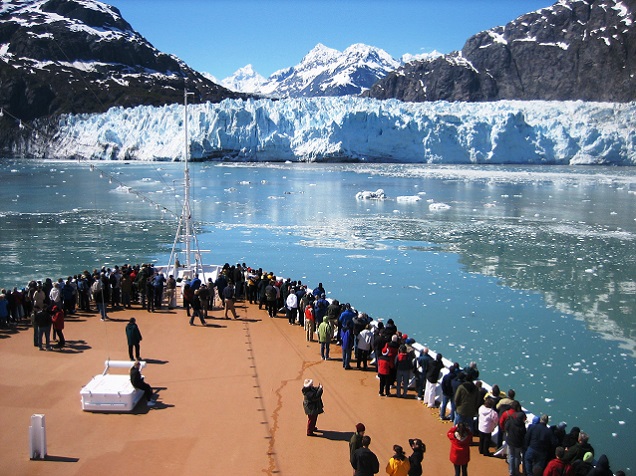
NPS Photo
Tidewater and freshwater glaciers are formed on land but terminate in bodies of water. They often calve to produce floating chunks of glacier ice known as icebergs. In these water-terminating glaciers, calving often accounts for the majority of the glacier's ablation (ice loss).
Tidewater glaciers can flow directly into the ocean in an open coast locations; they also can discharge into steep-walled fjords.
In temperate latitudes, water-terminating glaciers can be among the fastest-flowing in the world. Their high speeds endow them with a high capacity for sculpting and carving the landscape.
Find Your Park: Which Parks Have Tidewater and Freshwater Glaciers?
- Denali National Park & Preserve, Alaska [Geodiversity Atlas] [Park Home]
- Gates Of The Arctic National Park & Preserve, Alaska [Geodiversity Atlas] [Park Home]
- Glacier Bay National Park & Preserve, Alaska [Geodiversity Atlas] [Park Home]
- Katmai National Park & Preserve, Alaska [Geodiversity Atlas] [Park Home]
- Kenai Fjords National Park, Alaska [Geodiversity Atlas] [Park Home]
- Lake Clark National Park & Preserve, Alaska [Geodiversity Atlas] [Park Home]
- North Cascades National Park, Washington [Geodiversity Atlas] [Park Home]
- Olympic National Park, Washington [Geodiversity Atlas] [Park Home]
- Wrangell - St Elias National Park & Preserve, Alaska [Geodiversity Atlas] [Park Home]
- Yukon - Charley Rivers National Preserve, Alaska [Geodiversity Atlas] [Park Home]
To learn more about glaciers, glacier features, and glacial landforms, see the Glaciers & Glacial Landforms Page.
Part of a series of articles titled Types of Glaciers.
Previous: Valley and Piedmont Glaciers
Next: Rock Glaciers
Last updated: February 9, 2018
